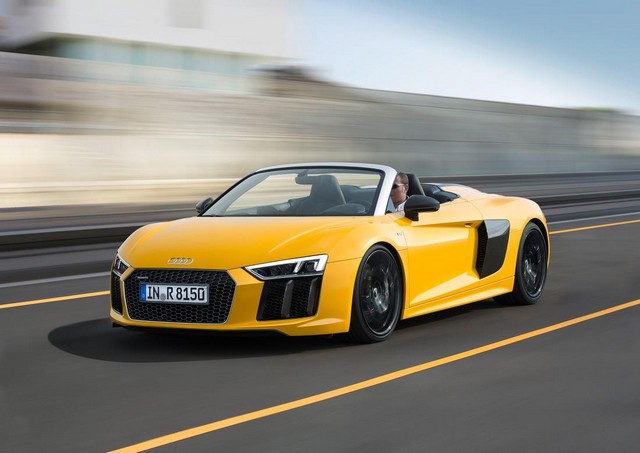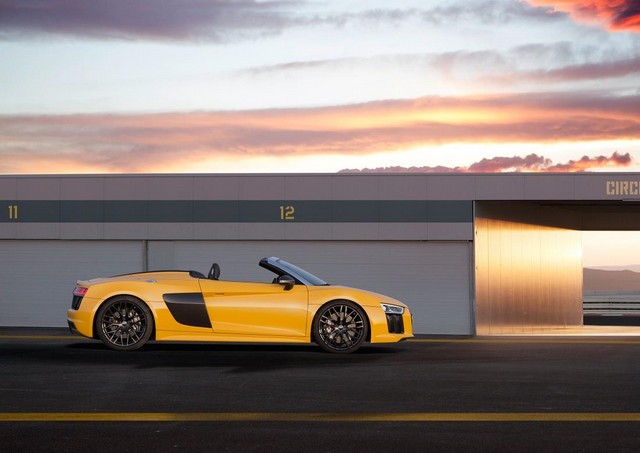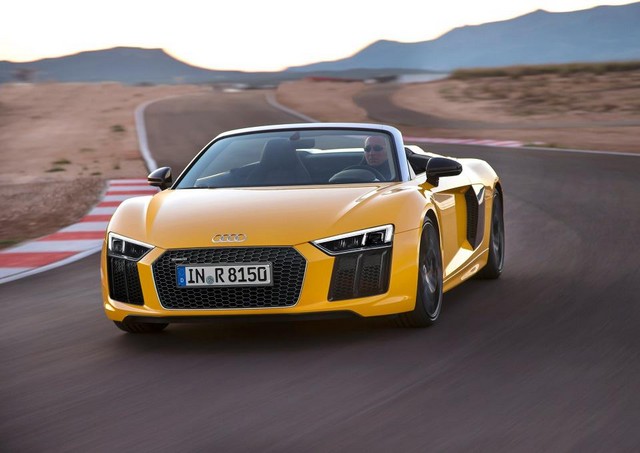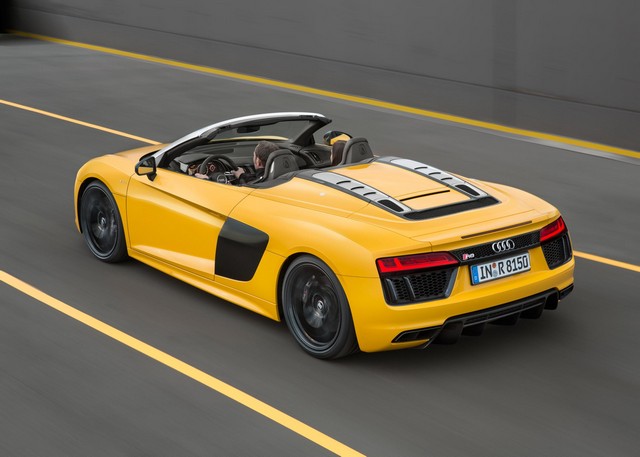JANUARY 25, 2017
 Monday, January 23, 2017 at 10:16AM
Monday, January 23, 2017 at 10:16AM 

 The Hydrogen Future. In the first global initiative of its kind, the "Hydrogen Council," meeting in Davos for the first time on Tuesday, is determined to position hydrogen among the key solutions of the energy transition. The 'Hydrogen Council' is currently made up of 13 CEOs and Chairpersons from various industries and energy companies committed to help achieve the ambitious goal of reaching the 2 degrees Celsius target as agreed in the 2015 Paris Agreement. The international companies currently involved are: Air Liquide, Alstom, Anglo American, BMW GROUP, Daimler, ENGIE, Honda, Hyundai, Kawasaki, Royal Dutch Shell, The Linde Group, Total and Toyota. The Council is led by two Co-Chairs from different geographies and sectors, currently represented by Air Liquide and Toyota. During the launch, members of the 'Hydrogen Council' confirmed their ambition to accelerate their significant investment in the development and commercialization of the hydrogen and fuel cell sectors. These investments currently amount to an estimated total value of €1.4 Bn/year. This acceleration will be possible if the key stakeholders increase their backing of hydrogen as part of the future energy mix with appropriate policies and supporting schemes. Hydrogen is a versatile energy carrier with favorable characteristics since it does not release any CO2 at the point of use as a clean fuel or energy source, and can play an important role in the transition to a clean, low-carbon, energy system. Hydrogen technologies and products have significantly progressed over past years and are now being introduced to the market. The Council will work with, and provide recommendations to, a number of key stakeholders such as policy makers, business and hydrogen players, international agencies and civil society to achieve these goals. Editor's Note: Peter's idea for The Future of Racing, in a presentation he made to industry and racing leaders a decade ago, is proving to be more visionary by the day. Read about the Hydrogen Electric Racing Federation here. -WG
The Hydrogen Future. In the first global initiative of its kind, the "Hydrogen Council," meeting in Davos for the first time on Tuesday, is determined to position hydrogen among the key solutions of the energy transition. The 'Hydrogen Council' is currently made up of 13 CEOs and Chairpersons from various industries and energy companies committed to help achieve the ambitious goal of reaching the 2 degrees Celsius target as agreed in the 2015 Paris Agreement. The international companies currently involved are: Air Liquide, Alstom, Anglo American, BMW GROUP, Daimler, ENGIE, Honda, Hyundai, Kawasaki, Royal Dutch Shell, The Linde Group, Total and Toyota. The Council is led by two Co-Chairs from different geographies and sectors, currently represented by Air Liquide and Toyota. During the launch, members of the 'Hydrogen Council' confirmed their ambition to accelerate their significant investment in the development and commercialization of the hydrogen and fuel cell sectors. These investments currently amount to an estimated total value of €1.4 Bn/year. This acceleration will be possible if the key stakeholders increase their backing of hydrogen as part of the future energy mix with appropriate policies and supporting schemes. Hydrogen is a versatile energy carrier with favorable characteristics since it does not release any CO2 at the point of use as a clean fuel or energy source, and can play an important role in the transition to a clean, low-carbon, energy system. Hydrogen technologies and products have significantly progressed over past years and are now being introduced to the market. The Council will work with, and provide recommendations to, a number of key stakeholders such as policy makers, business and hydrogen players, international agencies and civil society to achieve these goals. Editor's Note: Peter's idea for The Future of Racing, in a presentation he made to industry and racing leaders a decade ago, is proving to be more visionary by the day. Read about the Hydrogen Electric Racing Federation here. -WG

(Ford)
The numbers are in for the new Ford GT. With 647HP and 550 lb.-ft. of torque, Ford’s new high-output 3.5-liter V6 produces the most horsepower of any EcoBoost production engine ever, making the Ford GT the fastest production car ever built by Ford. The engine’s wide powerband produces 90 percent of its peak torque from 3,500 rpm. Ford GT’s dry weight just tops 3,000 pounds, which places the supercar between its two primary competitors, the McLaren 675LT and Ferrari 488. Ford GT’s power-to-weight ratio is 4.72 pounds/horsepower. Ford says: "Delivering the highest output of any EcoBoost® production engine to date, the all-new Ford GT couples its extraordinary power with impressive aerodynamic efficiency and advanced active dynamics to achieve a maximum speed of 216 mph – making it the fastest Ford production vehicle on the track ever." In 2016 development testing against McLaren (675LT) and Ferrari (458 Speciale), with all contenders track-prepped with new fluids, fresh tires and optimal suspension settings, in identical conditions and with the same driver behind the wheel, according to Ford, the Ford GT bested both the McLaren 675LT and Ferrari 458 Speciale at Calabogie Motorsports Park in Canada. The lap times? Ford GT: 2:09.8; McLaren 675LT: 2:10.8; Ferrari 458 Speciale: 2:12.9. “The Ford GT is all about performance,” said Raj Nair, Ford executive vice president, global product development and chief technical officer. “We achieved considerable weight savings with the carbon fiber architecture. We then reinvested some of that savings into where it counts most – performance, specifically, the active dynamics. The result is an even faster car.” The active dynamics systems – for both suspension and aerodynamics – are designed to make the car perform with optimum downforce, drag and balance at any speed, creating a faster setup regardless of driver skill level.

(Audi images)
The new, second generation, high-performance Audi R8 V10 Spyder is faster and more powerful than its predecessor. The R8 Spyder features the same naturally-aspirated 5.2-liter V10 engine and seven-speed S-tronic® dual-clutch transmission as the R8 V10 Coupe. The Spyder also shares Audi's newly developed ASF® aluminum and carbon fiber construction with the Coupe.

With 540HP and 398 lb-ft of torque, the new R8 V10 Spyder goes from 0-60 mph in 3.5 seconds - equal to the R8 V10 Coupe - with a top speed of 198 mph.

As with the R8 V10 Coupe, Audi's R8 LMS GT3 racecar heavily influenced the development of the Spyder.

To enhance the top-down driving experience, the soft top in the new R8 Spyder features an electrohydraulic drive system that raises and lowers the roof in only 20 seconds, at speeds of up to 31 mph. The roof was developed with lightweight construction in mind, weighing just 97 pounds, helping to keep the weight of the vehicle and center of gravity low. It is operated by the soft-top button in the center console. When opened, the soft top folds into a flat storage compartment over the engine. With the top up, the rear window blocks the wind, or can be opened to allow the sound of the naturally aspirated V10 engine to flow into the vehicle cockpit. In typical Audi fashion, the Spyder features driver-oriented controls and functions, including the fully digital Audi virtual cockpit. How much? The starting MSRP is $175,100 (which excludes the destination charge of $1,250), plus taxes, title, options, and dealer charges.
Editor-In-Chief's Note: Tom Bartkiewicz is an old friend of AE and occasional contributor. He's also a committed car enthusiast and historian with a deep understanding of economics as it pertains to the car business and beyond. We think you will find his latest piece on the autonomous car movement enlightening, informative, filled with tremendous perspective and with more than a little foreboding added in for good measure. It is superb. -PMD
The End of Progress.
By Tom Bartkiewicz
Baton Rouge. One of my better friends while growing up was Chip. Chip’s grandfather was general manager and part owner of the Chrysler/Dodge store in Baton Rouge. Chip’s mom, Suzanne knew I liked cars and one day in the fall of 1964 she collected Chip and me in their Dodge and said we were going down to Standard Motorcar Company to see a very special car. When we arrived a small crowd was there and upon making our way through, there in all its bronze magnificence was the car of the future, a Chrysler Ghia Turbine car.
The late fifties and early sixties are often referred to as the “Jet Age” and here was a car with a jet engine. The Chrysler representative asked Suzanne if she would like to drive the car with us along for a ride. We climbed in the back, she got in the driver's seat and the rep sat in the passenger seat. After some instruction, she turned the key and to this day I can still remember the sound of that turbine spool up, the ignitor going off and the jet engine whine. She put the car in drive and off we went. We drove around downtown mesmerized by the rising and falling pitch of the gas turbine. Upon return we were given literature about the car along with a plastic promotional model. I still have all of the literature and the model sits on a shelf in my house still wrapped in the original tissue paper in the original box.
Some would argue that the Chrysler Turbine was the coolest car Detroit ever built. It remains to this day an icon of the sixties and the progress we were all anticipating. The Russians launched Sputnik in 1957 and sent a man into space in 1961. The U.S. would respond with its space program with the goal of putting a man on the moon before the end of the decade. Supersonic passenger planes were being developed to replace jet airliners. Both putting a man on the moon and supersonic transport would be achieved. As for the turbine car, two years after my ride Chrysler would scrap almost all of them, keeping only a couple for historical purposes. In essence the benefits of the gas turbine did not outweigh its costs.
As futuristic and progressive as a jet powered car sounded there was still a great deal of progress taking place in the automobile industry. I remember an ad Ford ran in 1966 called Classic and Son of a Classic. The ad had a picture of a “Classic” 1946 Ford “Woodie” station wagon and below it the “Son of a Classic”, a 1966 Ford Country Squire station wagon. The ’46 Ford’s body was made out of wood and steel, the engine was a flat head V8 engine with a three speed manual transmission. The suspension was solid axles front and rear on leaf springs. Steering and brakes were both manual. In the 20 years from ’46 to ’66, the Country Squire progressed to an all steel body, an overhead valve V8, a three speed automatic transmission, independent coil spring front suspension, coil spring rear suspension, power steering, power front disc brakes, power windows, power seats, power door locks, a choice of AM or AM/FM radio, an 8-track stereosonic tape system, speed control and even air conditioning. And lest I forget, a dual action tailgate providing access to dual-facing rear seats. All significant increases in comfort and convenience.
Think of the improvements in the automobile when comparing a 1916 Model T to the 1966 Country Squire. Now compare the Country Squire to a 2016 Ford Expedition or Chevy Suburban. Most of the improvements have been in the areas of safety and emissions. The first 50 years of progress saw significant improvements in speed, refinement, comfort and convenience. The following 50 years can be said to address what economists would call the spillovers and externalities caused by the automobile.
Cultural theorist Paul Virilio is best known for his statement: “the invention of the ship was also the invention of the shipwreck”. It is a concise and eloquent warning that all technology has a dark side. Innovation rarely occurs without damage so we must be wary of the propaganda of progress, the unintended consequences of the progress a new technology claims to provide and addressing those consequences when they manifest.
There is another aspect of technology requiring consideration and it can best be summed up with a quote from Swiss playwright and novelist Max Frisch: “Technology is the art of arranging reality so we don’t have to experience it”. In my view, I take this to mean that technology can cut us off from the natural world. The world in which we call on the use of senses and instincts.
I thought about Frisch’s quote upon reading an obituary in “The Economist” on Mau Piailug. Mau was a master navigator trained in the ancient Polynesian art of sailing by the stars, the feel of the wind and the look of the sea. Mau did not operate on latitude, longitude, angles or mathematical calculations. Setting out on an ocean voyage, he would point his canoe into the right slant of wind and set a path between a rising star and an opposite setting star. He knew them all so well that he seemed to hold the whole cosmos in his head. By day, he was guided by the rising and setting sun and the mother of life, the ocean herself. He could read how far he was from shore, and its direction, by the feel of the swell against the hull. He could detect shallower water by color, and see the light of invisible lagoons reflected in the undersides of clouds. Sweeter tasting fish meant rivers in the offing; groups of birds, homing in the evening, showed him where land lay.
In 1976 Mau sailed 2,500 miles from Hawaii to Tahiti as Micronesians and Polynesians had done for millennia demonstrating how to sail alone for weeks out in the Pacific, without maps, using his senses and instincts, going by the stars, the sun, the wind, the ocean and his spirits. Mau, the last of the master navigators, died July 12, 2010 at the age of 78
In the Dark Age Ahead, author Jane Jacobs defines a dark age as a great forgetting: not being able to do what we had done in the past. It’s about the loss of skills and understanding. I think about a film by Ford from the sixties showing Keith Duckworth at a drafting table with his slide rule designing the Cosworth DFV for Colin Chapman’s Lotus 49. Turning the drawings over to skilled machinists who then made every part for assembly into what many consider the greatest racing engine. Are skills like these being lost down the memory hole?
The irony here is that given all of the problems we’re currently facing, we view technology as the way to solve them. In almost all cases the problems have been caused by a new technology. It is technology that is cutting us off from the natural world and creating a great forgetting.
Some here are I’m sure familiar with Johann Wolfgang von Goethe “The Sorcerer’s Apprentice.” It is probably through Walt Disney’s classic animation movie “Fantasia” wherein Mickey Mouse is used as the apprentice. The story finds its premise in the existence of a particularly powerful master of magical spells. In our use here, magic is synonymous with technology. It is a tale full of concern and irony for the ingenuousness with which technology when improperly understood and used can become autonomous. In the tale, the apprentice in the absence of the sorcerer uses magic in pursuit of his material comfort and the satisfaction of his vanity. The apprentice loses control of the magic. The magic is incapable of any critical control or assessment of the final results of its actions. As the magic conjured by the apprentice spins out of control it becomes autonomous. The Sorcerer returns to regain control indicating the reappearance of wisdom that still maintains its ties with tradition, and that still knows how to make use of a tool without allowing it to become autonomous. This wisdom restricts the tool to exclusively performative functions: its range of action precisely limited, and it then returns to a state of rest.
On May 31, 2009, Air France flight 447 took off from Rio de Janeiro for Paris. The crew was in charge of an Airbus 330 which is equipped with an automated flight system known as fly-by-wire. Flight 447 would become a textbook case for the “paradox of automation”. The paradox of automation has three strands. First, automatic systems accommodate incompetence by being easy to operate and by automatically correcting mistakes. Second, even if operators are expert, automatic systems erode their skills by removing the need for practice. Third, automatic systems tend to fail either under unusual situations, requiring a particularly skilful response. A more capable and reliable automatic system makes the situation worse.
While flying through a thunderstorm at high altitude, some instruments failed due to icing and the automatic flight system shut down and turned control of the plane over to the crew and they were not used to flying their own plane at altitude. The pilot’s last words were “but what’s happening”. The pilots had no sorcerer on board to take control of the magic. Four seconds later the plane crashed into the Atlantic killing the crew and all passengers.
Cars sold today contain much of the same fly-by-wire technology as the Airbus 330 used in Air France flight 447 but instead it is called drive-by-wire. I tell those who will listen that cars today are technological marvels and that they have no idea what’s going on under the hood. Most are all for conjuring up some magic to take over the mundane task of driving. There are far more important things to concern oneself with. The dark side is although this magic will routinely tidy up ordinary messes occasionally it will create an extraordinary mess and there won’t be a sorcerer there to fix it.
The question then is how do we define progress. In hindsight, the Chrysler Turbine car was fundamentally and essentially no better than the Dodge we rode in to see it. The benefits of the jet engine that revolutionized commercial aviation did not transfer to the private car. A Boeing 707, the first successful jet-engined passenger plane which was introduced in 1958, cruised at the same speed as the current Dreamliner. The Dreamliner is lighter through the use of new materials and able to carry more passengers while using less fuel. It is also significantly more expensive. These improvements are more evolutionary than revolutionary and, as with current motor vehicles, were necessary in order to improve safety and reduce fuel consumption and emissions. In economic terms, these improvements were driven by the need to internalize the externalities, the costs not born by the manufacturers and users of these technologies and shifted onto society and the environment.
Technology is to many synonymous with progress. But as I’ve tried to demonstrate it has a dark side. Technology can result in all manner of unintended consequences. It cuts us off from the natural environment. It causes us to forget useful skills. We acquire the means to multiply our capabilities while being unacquainted with the ends. The problem lies not in the technology but in the banal, superficial and irresponsible ends to which the technology is often used. It is our magic and like the apprentice it seems we’re unable to free ourselves from the spirits we have summoned. But as the problems confronting us compound, the solution is to create new technologies to solve many of these problems that have been created by technology in an unending march to greater complexity.
Where does this take us? In pondering this question another Disney animated movie comes to mind, WALL-E. The earth has been poisoned by the waste created by a consumer society and rendered uninhabitable. The remaining inhabitants have been evacuated into space in starliners where they will drift until the earth is livable again and they can return. Robots have been left behind to clean up the waste. On the starliner Axiom, people travel through the ship on autonomous vehicles staring and talking into computers. This sounds eerily familiar and as the saying goes “art imitates life”.
Our intelligence has produced all manner of amazing technology. We have used much of it imprudently and now face a great many calamities. In the words of Saul Bellow: “A great deal of intelligence can be invested in ignorance when the need for illusion is deep”. Unable to free ourselves from the spirits we have summoned, our response has been to double down on our use of technology. We ignore the conflicts and create a situation of dangerous self-deception.




